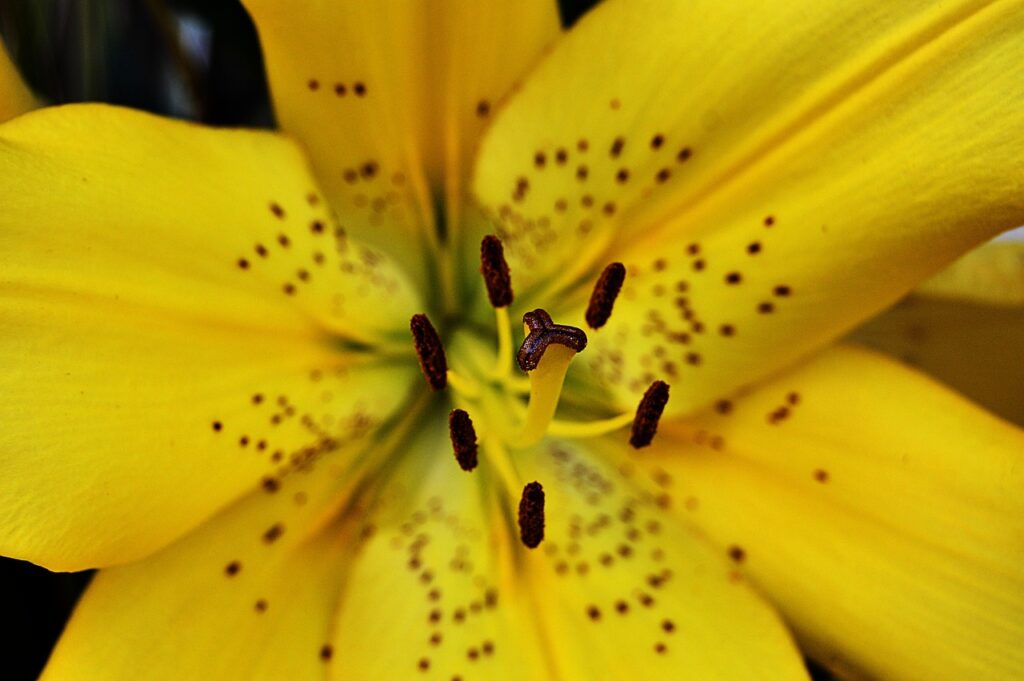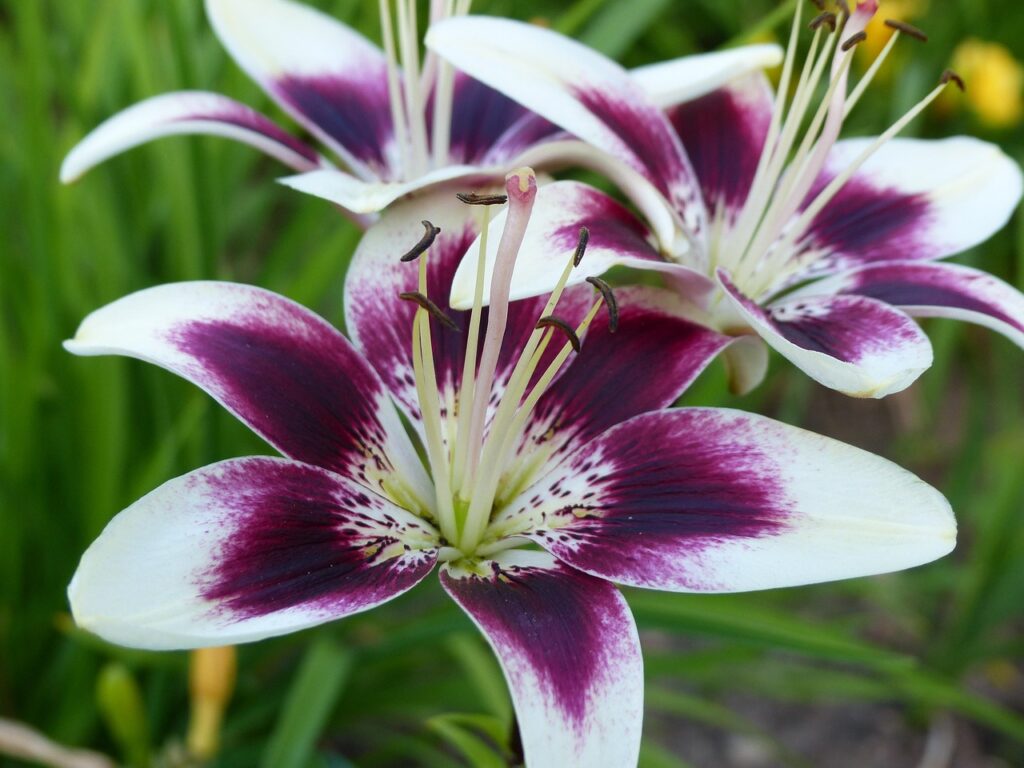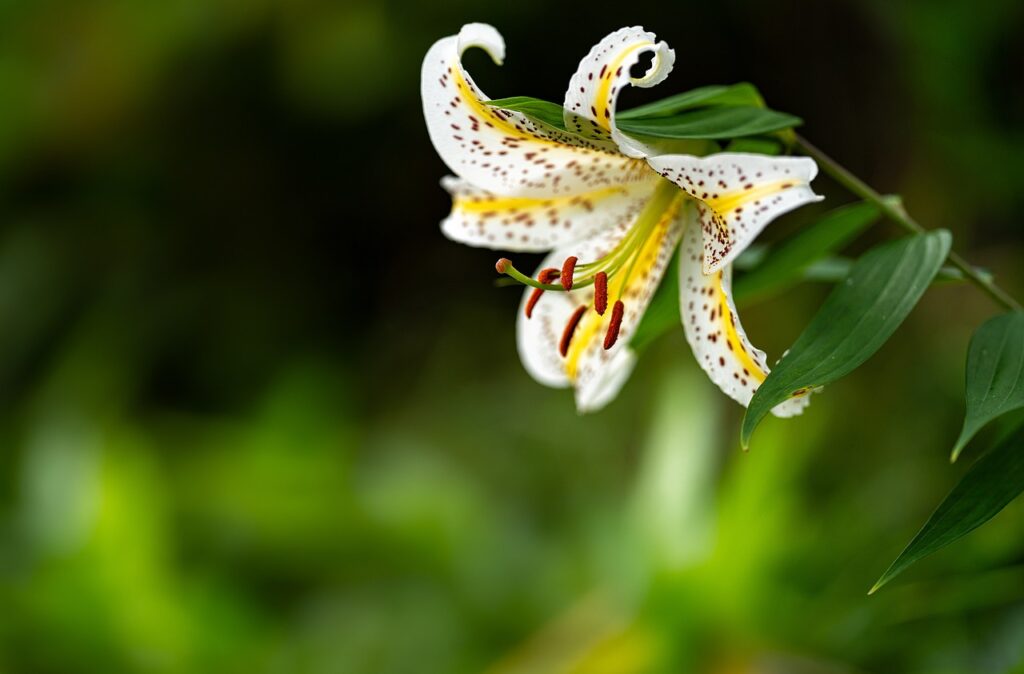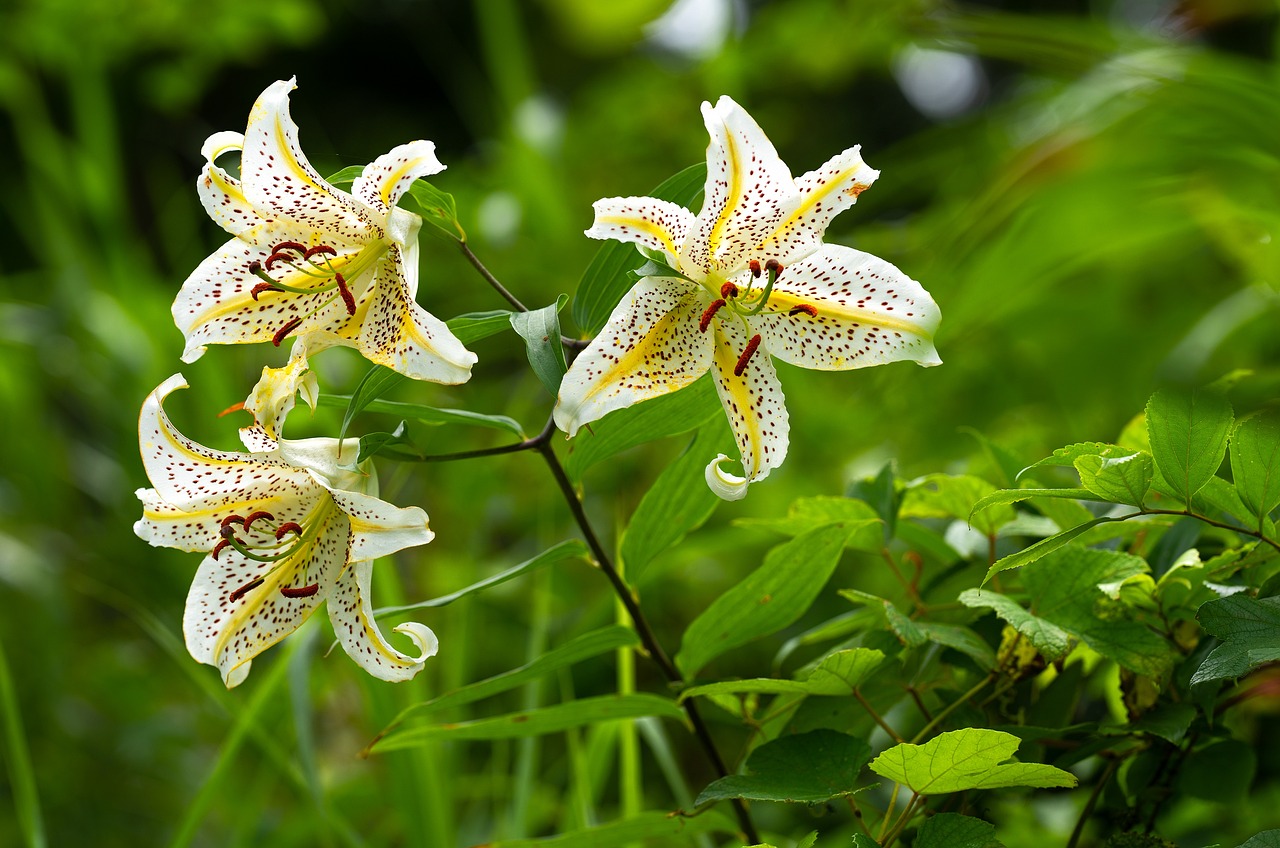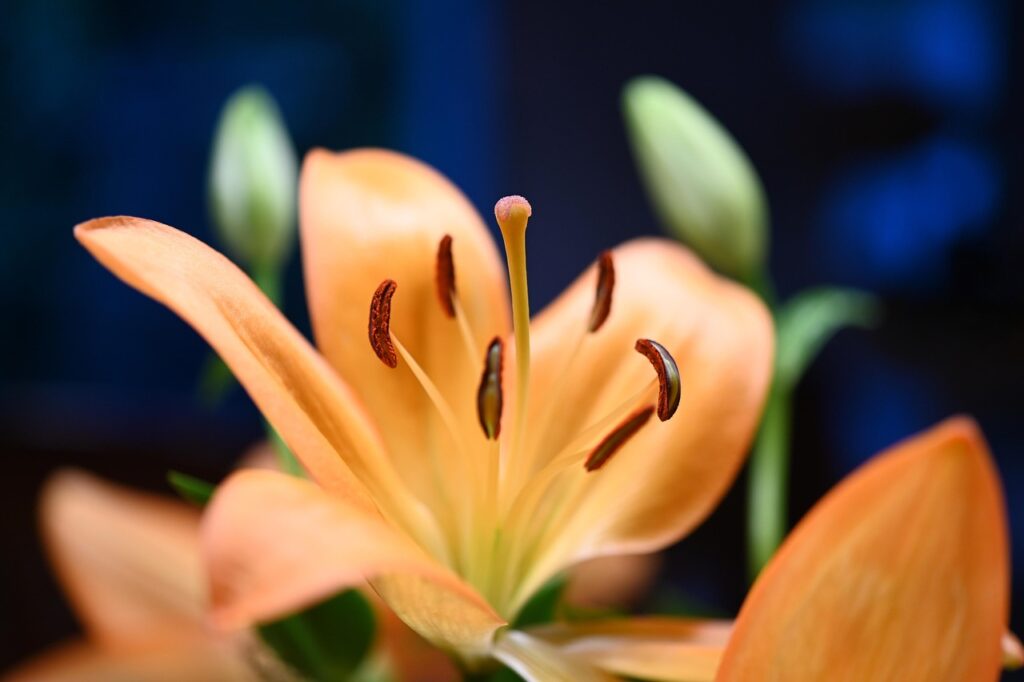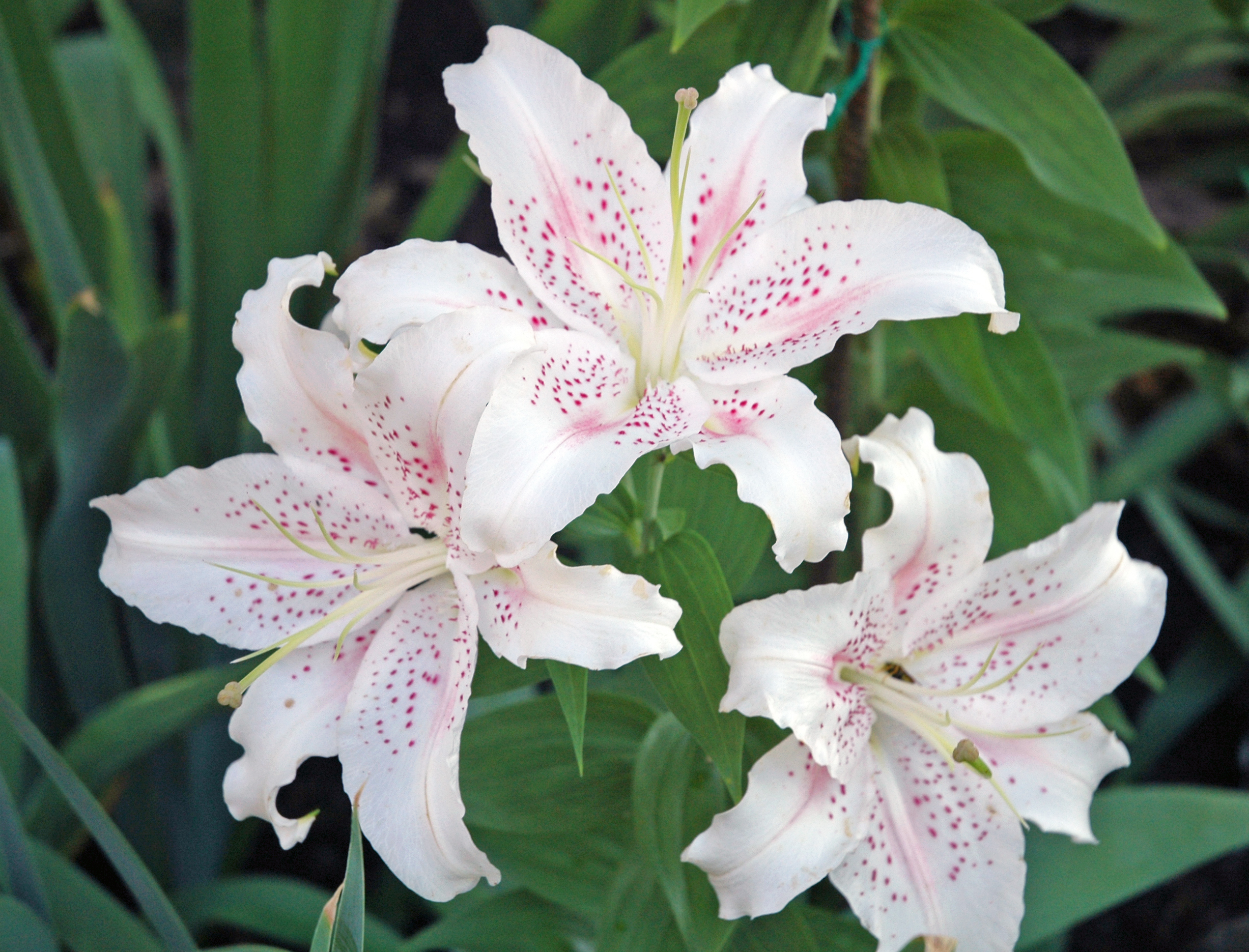
The genus *Lilium*, encompassing true lilies, represents a significant group of herbaceous flowering plants renowned for their large, often prominent and fragrant flowers. Growing from bulbs, these perennials are important in culture and literature across the globe, with most species originating in the Northern Hemisphere and thriving in temperate to subtropical climates.
This in-depth article aims to provide a comprehensive overview of the *Lilium* genus, drawing exclusively from established botanical and horticultural knowledge. It will explore the inherent biological attributes of lilies, their intricate taxonomic classifications, their natural distribution across continents, and the vital ecological interactions that define their place in various ecosystems.
Furthermore, this exploration will detail the extensive efforts in lily cultivation, from general gardening practices to the development of numerous ornamental hybrids. We will also examine the specific characteristics of award-winning varieties and delve into the distinct classifications of garden forms, beginning with the widely popular Asiatic and Martagon hybrids, offering a structured understanding of these remarkable plants.
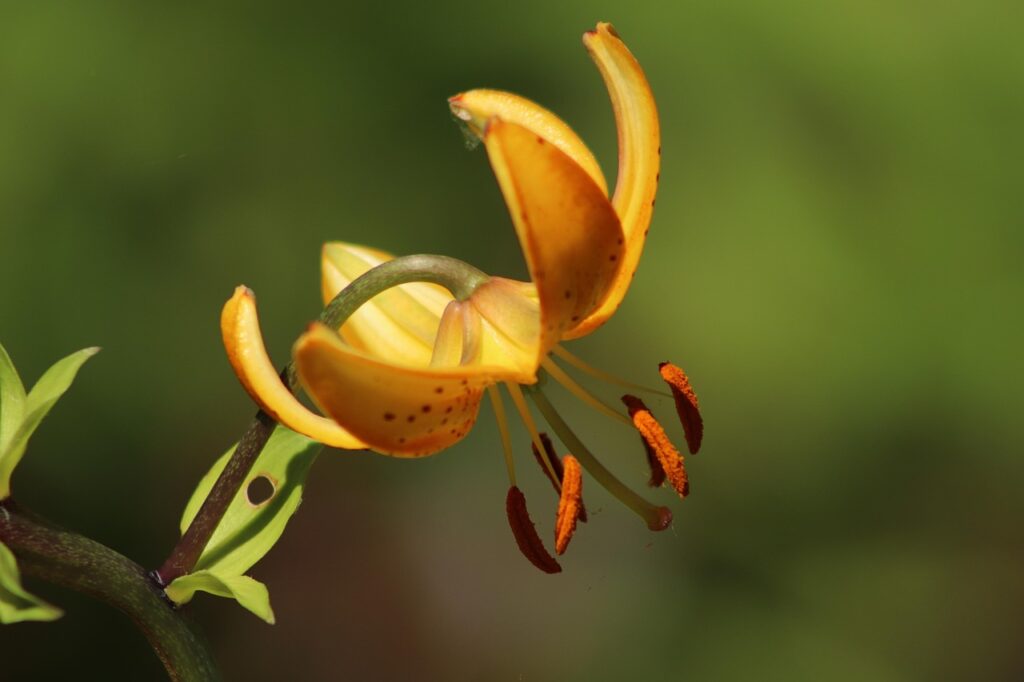
1. **General Characteristics of the Lilium Genus** Lilies are typically tall perennials, exhibiting a considerable range in height from 30 to 180 centimeters (1–6 feet). These impressive plants develop naked or tunicless scaly underground bulbs, which serve as their primary organs for perennation, allowing them to survive through dormant periods. Some North American species demonstrate further complexity, with the base of the bulb extending into rhizomes, from which numerous smaller bulbs can emerge, showcasing a diverse range of growth patterns within the genus.
The majority of lily bulbs are deeply embedded within the soil, a protective measure, though a few species are known to form bulbs closer to the soil surface. Many species also develop stem-roots; in these cases, the bulb naturally grows at a certain depth, and each year, the new stem produces adventitious roots above the bulb as it breaks through the soil. These stem-roots complement the basal roots that form at the bulb’s base, with several species additionally possessing contractile roots designed to pull the bulbs further into the soil for optimal positioning.
The flowers of *Lilium* species are notably large and frequently fragrant, presenting an expansive palette of colors including whites, yellows, oranges, pinks, reds, and purples. Their aesthetic appeal is further enhanced by varied markings such as spots and brush strokes. Lilies are generally late spring- or summer-flowering plants, with blooms typically arranged in racemes or umbels at the stem’s apex. The flowers are characterized by six spreading or reflexed tepals, forming shapes that range from funnel-like to the distinctive “Turk’s cap” form, each bearing a nectary at its base. The ovary is superior, positioned above the attachment point of the anthers, and the fruit develops into a three-celled capsule. Seeds mature in late summer, displaying complex germination patterns often adapted to cool temperate climates. The basic chromosome number for the genus is n=12.
2. **Taxonomic Structure and Species Diversity** The taxonomic division of the *Lilium* genus largely adheres to the classical framework established by Comber, a system that has guided the classification of these diverse plants. Species acceptance within this framework is guided by the World Checklist of Selected Plant Families, ensuring a consistent and globally recognized approach to identifying true lily species. The genus is notably complex, with taxonomies for specific sections, such as Pseudolirium, drawing from comprehensive regional floras like the Flora of North America, while Chinese species are classified according to the Flora of China, highlighting the intricate regional variations in botanical understanding.
The internal structure of *Lilium* is further refined through detailed phylogenetic analyses. For instance, the taxonomy of Section Liriotypus has been reconsidered based on molecular studies, and sections like Sinomartagon and Archelirion have been clarified through research involving nuclear ribosomal DNA and chloroplast DNA sequences. These studies have revealed that certain sections, such as Sinomartagon and Leucolirion, are divided into paraphyletic groups, indicating complex evolutionary relationships within the genus.
Currently, the *Lilium* genus comprises 119 accepted species, categorized into seven distinct sections: Martagon, Pseudolirium, Liriotypus, Archelirion, Sinomartagon, Leucolirion, and Daurolirion. Each section groups species with shared morphological and genetic characteristics, reflecting common evolutionary pathways. For example, the Martagon section includes species like *Lilium martagon* (Turk’s cap lily), while Pseudolirium encompasses various North American lilies such as *Lilium canadense* (Canada Lily). The genus also has recognized synonyms like *Lirium* and *Martagon* (Rchb.) Opiz, and some species formerly classified under *Lilium* have since been reallocated to other genera, including *Cardiocrinum*, *Notholirion*, and *Fritillaria*, demonstrating the dynamic nature of botanical classification.
Read more about: Exploring Biblical Events Through Science: Surprising Confirmations

3. **Global Distribution and Varied Habitats** The geographical distribution of true lilies, belonging to the *Lilium* genus, spans vast regions across both the Old and New Worlds. In the Old World, their natural range extends throughout much of Europe, across the majority of Asia to Japan, southward into India, and eastward through Indochina to the Philippines. This expansive distribution highlights their adaptability to a wide array of environmental conditions found across different continents.
In the New World, *Lilium* species are found from southern Canada, stretching through a significant portion of the United States. This broad North American presence underscores their success in colonizing diverse ecological niches, from northern temperate zones to more southerly climes within the continent. The presence of lilies across such a vast global footprint speaks to their evolutionary resilience and capacity for adaptation to varied geographical and climatic zones.
Lilies commonly thrive in specific habitat types, primarily adapting to woodland environments, often in montane regions. These settings provide the filtered light and consistent moisture that many species prefer. They are also found in grassland habitats, where they can emerge among grasses and other herbaceous plants. A small number of species possess the remarkable ability to survive in marshland conditions, demonstrating a broader tolerance for moisture levels than typically expected. Furthermore, epiphytic lilies have been identified in tropical Southeast Asia, showcasing an even greater diversity in their preferred growth substrates and conditions. Generally, *Lilium* species exhibit a preference for moderately acidic or lime-free soils, a key factor influencing their successful establishment and growth in their native environments.
Read more about: Devon: Unveiling the Enduring Spirit of England’s Southwestern County
4. **Ecological Roles and Environmental Challenges** In their natural ecosystems, lilies play a role as food plants for the larvae of certain Lepidoptera species, including the Dun-bar moth. This interaction represents a specific trophic link, where the lily foliage provides essential sustenance for these insect herbivores during their developmental stages. Such relationships are integral to the food webs of temperate and subtropical environments where lilies are endemic, contributing to the biodiversity and ecological balance of these habitats.
However, lilies, particularly in North America, face significant ecological challenges, most notably from the proliferation of deer populations. Species such as the white-tailed deer (*Odocoileus virginianus*) have experienced increased numbers, largely due to factors like the historical elimination of large predators which naturally regulated deer populations. This demographic shift has resulted in a substantial downturn in wild lily populations, as deer browse heavily on the plants.
The impact of deer extends beyond wild populations, posing a considerable threat to garden lilies as well. Gardeners and conservationists often find it challenging to protect these plants from intense herbivory. Practical solutions for safeguarding lilies in affected areas can be demanding; for instance, fences as high as 8 feet may be necessary to effectively prevent deer from consuming the plants. This illustrates the impracticality of such measures for most wild areas, highlighting the ongoing conservation concerns for native lily species.
Read more about: Angelina Jolie: Tracing a Global Icon’s Evolution from Cinematic Stardom to Profound Humanitarian Engagement
5. **Fundamental Cultivation Practices** Many *Lilium* species are extensively cultivated globally in a range of climates, including temperate, subtropical, and tropical regions. This widespread cultivation reflects their ornamental value and adaptability to various gardening conditions. Over time, numerous ornamental hybrids have been meticulously developed, designed to enhance aesthetic qualities such as flower size, color, fragrance, and plant stature, catering to the diverse preferences of gardeners and the demands of commercial horticulture.
Beyond their use in general garden settings, lilies hold significant commercial importance as cut flower crops and potted plants. *Lilium longiflorum*, commonly known as the Easter lily, is a prime example; it is specifically forced to bloom outside its natural flowering season to meet the demand for particular markets, such as the Easter trade. This strategic manipulation of their growth cycle underscores the economic value and careful management involved in large-scale lily production for the floristry industry.
For successful cultivation, lilies are typically planted as bulbs during their dormant season. Optimal planting conditions generally involve a south-facing, slightly sloping aspect in the northern hemisphere, allowing for adequate sun or part shade exposure. The recommended planting depth is usually 2.5 times the height of the bulb, with a notable exception being *Lilium candidum* (Madonna lily), which should be planted near the soil surface. Most species thrive in porous, loamy soil, and critically, good drainage is essential to prevent bulb rot. While most species bloom in July or August in the northern hemisphere, specific flowering periods can vary, with some beginning in late spring and others in late summer or early autumn. Given their contractile roots, which naturally pull the plant to the correct depth, it is often considered safer to plant bulbs slightly too shallowly rather than too deep. A soil pH of approximately 6.5 is generally considered safe and conducive to healthy growth for most lilies. Consistent watering is crucial during the active growing season. For varieties with heavy flower heads that might otherwise droop, staking is a common practice to ensure they remain upright and display their blooms effectively.
Read more about: June: A Comprehensive Chronicle of the Sixth Month’s Enduring Legacy

6. **Distinguished Award-Winning Lilium Varieties** The horticultural excellence of various *Lilium* species and cultivars has been recognized through prestigious accolades, notably the Royal Horticultural Society’s Award of Garden Merit (AGM). This award signifies that a plant is of outstanding excellence for ordinary garden use, is readily available, and performs reliably in appropriate conditions. Such recognition provides valuable guidance for gardeners seeking proven, high-performing lily varieties to enhance their landscapes.
Several specific lilies have achieved this esteemed status, confirming their superior qualities. Among these award-winning varieties, confirmed in 2017, are ‘Golden Splendor’ African Queen Group (VI-/a) and ‘Casa Blanca’ (VIIb/b-c), both lauded for their robust growth and striking floral displays. Other notable recipients include ‘Fata Morgana’ (Ia/b) and ‘Garden Party’ (VIIb/b), each representing distinct classifications within the diverse spectrum of lily forms.
Further examples of lilies holding the Royal Horticultural Society’s Award of Garden Merit include the Golden Splendor Group (VIb-c/a), *Lilium henryi* (IXc/d), *Lilium mackliniae* (IXc/a), *Lilium martagon* – the Turk’s cap lily (IXc/d), and *Lilium pardalinum* – the leopard lily (IXc/d). The Pink Perfection Group (VIb/a) and *Lilium regale* – the regal lily or king’s lily (IXb/a) also feature on this distinguished list. These awards not only highlight the individual merits of each plant but also underscore the continued efforts in breeding and selecting superior lily varieties for cultivation globally.

7. **Asiatic Hybrid Lilies: Characteristics and Examples** Asiatic hybrid lilies, classified under Division I, represent a prominent and widely cultivated group within the *Lilium* genus, prized for their vibrant colors and hardiness. These hybrids are primarily derived from crossbreeding species within the *Lilium* section Sinomartagon, drawing genetic material from central and East Asian species. Key parent species include *Lilium amabile*, *Lilium bulbiferum*, *Lilium callosum*, *Lilium cernuum*, *Lilium concolor*, *Lilium dauricum*, *Lilium davidii*, *Lilium lancifolium* (also known as *Lilium tigrinum*), *Lilium lankongense*, *Lilium leichtlinii*, *Lilium pumilum*, and *Lilium wardii*, among others. This diverse genetic background contributes to the wide array of forms and colors seen in this division.
A defining characteristic of Asiatic hybrids is their medium-sized flowers, which typically exhibit an upright or outward-facing aspect. Unlike many other lily divisions, Asiatic hybrids are generally unscented, making them a suitable choice for individuals sensitive to strong fragrances. Their robust nature and wide range of colors—from bright yellows and oranges to deep reds and vibrant pinks—make them exceptionally popular for garden beds, borders, and as cut flowers. These hybrids are known for their relatively early blooming period compared to some other lily types, adding a splash of color to gardens in early to mid-summer.
Numerous cultivars have been developed within the Asiatic hybrid group, offering a vast selection for gardeners. Examples include *Lilium* ‘Cappuccino’, known for its distinctive color patterns, *Lilium* ‘Dimension’, and *Lilium* ‘Little Kiss’, each showcasing unique aesthetic qualities. *Lilium* ‘Navona’ is another popular cultivar, appreciated for its clean white blooms. Furthermore, dwarf or patio varieties have been specifically bred for container gardening and smaller spaces. These shorter forms, typically ranging from 36 to 61 centimeters (14–24 inches) in height, often bear cultivar names prefixed with ‘Tiny’, such as the ‘Lily Looks’ series, which includes varieties like ‘Tiny Padhye’ and ‘Tiny Dessert’, making them ideal for confined environments while still delivering impactful floral displays.
Following the exploration of Asiatic hybrids, our journey through the diverse world of *Lilium* now turns to other significant hybrid divisions, alongside crucial aspects of lily care, propagation, and their profound impact on human culture, medicine, and cuisine. These remarkable plants continue to captivate and challenge botanists and enthusiasts alike, showcasing an extraordinary blend of natural beauty and ecological resilience.
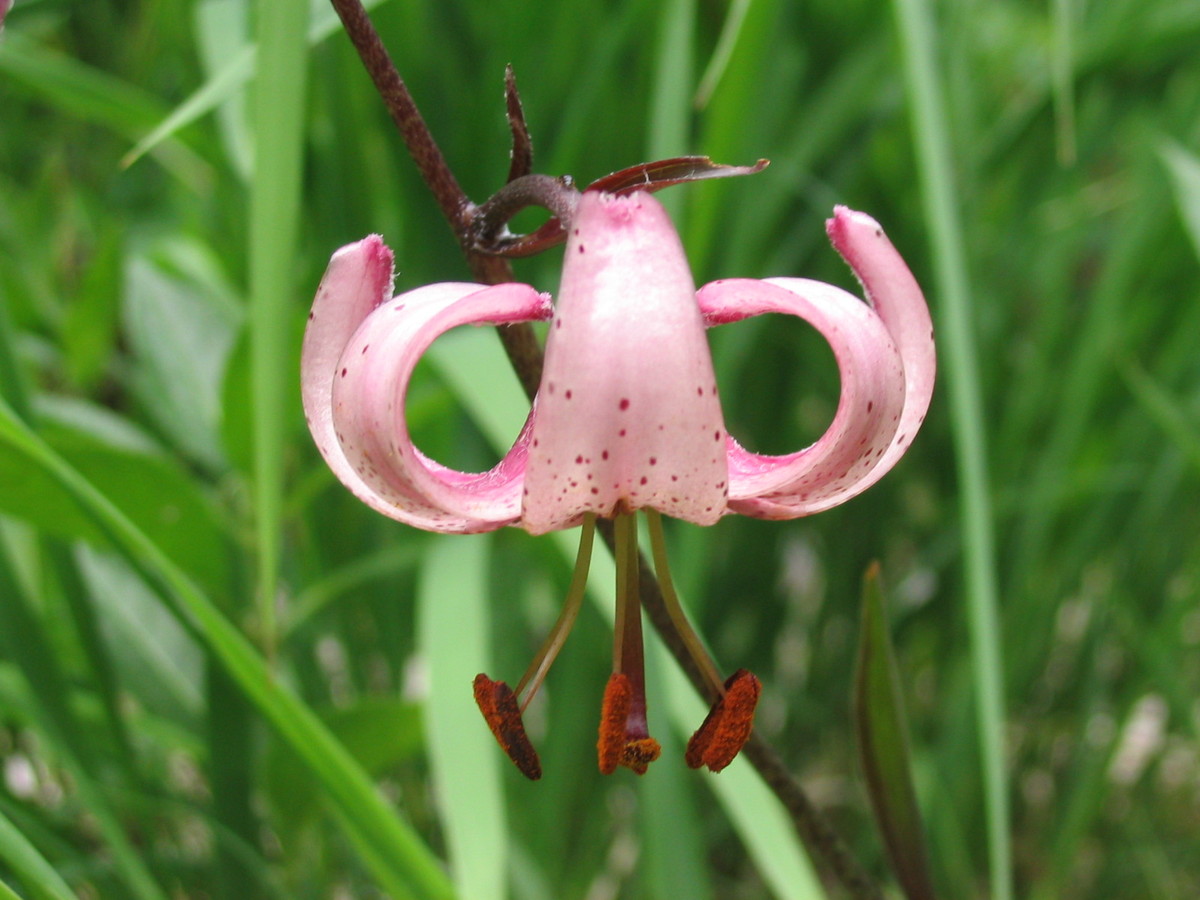
8. **Martagon and Candidum Hybrids (Divisions II & III)** Martagon hybrids, categorized under Division II, are a distinctive group primarily derived from species such as *Lilium dalhansonii*, *Lilium hansonii*, *Lilium martagon*, *Lilium medeoloides*, and *Lilium tsingtauense*. These hybrids are readily identifiable by their characteristic nodding, “Turk’s cap” style flowers, where the petals exhibit a strong recurved shape. This unique form, combined with their often intricate patterning, contributes to their ornamental appeal and distinct presence in garden settings, setting them apart from the upright blooms of Asiatic varieties.
Moving to Division III, we find Candidum, or Euro-Caucasian, hybrids, which largely comprise European species. Key contributors to this group include *Lilium candidum* (the iconic Madonna lily), *Lilium chalcedonicum*, *Lilium kesselringianum*, *Lilium monadelphum*, *Lilium pomponium*, and *Lilium pyrenaicum*, along with the notable hybrid *Lilium × testaceum*. These lilies often carry a rich historical and cultural significance, particularly the Madonna lily, which is renowned for its pure white, often fragrant blooms and its traditional association with purity.
The cultivation requirements for Candidum hybrids can be distinct, reflecting their European origins. For instance, *Lilium candidum* is a notable exception to general planting depth recommendations, as it thrives when planted near the soil surface. This specific need underscores the importance of understanding the individual characteristics of each lily division to ensure successful growth and flowering, allowing gardeners to appreciate the varied beauty that these groups offer.
9. **American and Longiflorum Hybrids (Divisions IV & V)** Division IV encompasses American hybrids, which are predominantly taller growing forms, originating from a rich array of North American species. Their parentage includes, but is not limited to, *Lilium bolanderi*, *Lilium canadense*, *Lilium columbianum*, *Lilium grayi*, *Lilium humboldtii*, *Lilium kelloggii*, *Lilium michauxii*, *Lilium michiganense*, *Lilium pardalinum*, *Lilium superbum*, and *Lilium washingtonianum*. Many of these hybrids develop as clump-forming perennials, distinguished by their rhizomatous rootstocks, which allow for gradual spread and establishment in appropriate environments.
These lilies are particularly valued for their often vibrant colors and their ability to naturalize in woodland-like garden settings, mirroring their native habitats. Their robust growth and striking flower forms, which can include bell-shaped or recurved petals, contribute significantly to the biodiversity and aesthetic appeal of North American landscapes. The adaptability of these hybrids to various soil types and light conditions, typical of their wild origins, makes them a fascinating group for cultivation.
In contrast, Division V, the Longiflorum hybrids, primarily consists of cultivated forms of *Lilium longiflorum* and its various subspecies. This group holds immense commercial significance, particularly as cut flowers, making them a cornerstone of the floristry industry. While less frequently grown in private gardens compared to other hybrid types, their importance for specific markets, such as the Easter trade, where they are known as Easter lilies, cannot be overstated. Their elegant, trumpet-shaped white flowers are highly prized for their symbolic value and classic beauty.

10. **Trumpet Lilies (Division VI)** Division VI comprises the exquisite Trumpet lilies, a group that also includes Aurelian hybrids, which are specifically crossbreeds involving *Lilium henryi*. This division is characterized by hybrids derived from a wide range of Asiatic species and their interspecific crosses, including notable species like *Lilium brownii*, *Lilium leucanthum*, *Lilium regale*, *Lilium sargentiae*, and *Lilium sulphureum*. The genetic diversity within this group results in a remarkable array of robust and fragrant plants.
The defining feature of Trumpet lilies is their striking trumpet-shaped flowers. These blooms typically face outward or somewhat downward, creating a dramatic visual effect in the garden. A particularly cherished quality of many Trumpet lilies is their strong fragrance, which is often more pronounced during the evening hours, adding an enchanting sensory dimension to any landscape where they are grown. This characteristic makes them highly sought after by gardeners who appreciate perfumed blooms.
The Regal lily (*Lilium regale*), a prominent member of this division, exemplifies the grandeur and aromatic allure of Trumpet lilies. Its majestic white flowers with yellow throats are not only visually stunning but also emit a captivating scent, solidifying its status as a garden favorite. The vigor and impressive stature of these hybrids ensure they command attention, whether in formal borders or more naturalistic plantings, contributing significantly to the summer garden’s display.
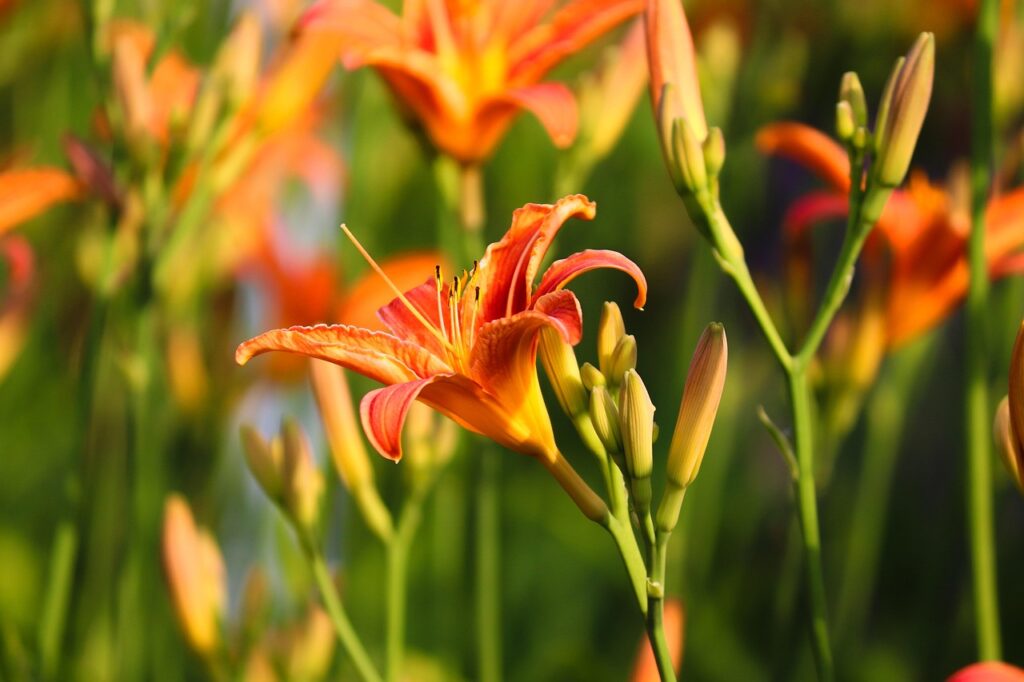
11. **Oriental Hybrids (Division VII)** Oriental hybrids, classified under Division VII, represent a highly prized group within the *Lilium* genus, renowned for their large, often intensely fragrant flowers and vibrant coloration. These hybrids are primarily based on species within the *Lilium* section Archelirion, drawing extensively from *Lilium auratum* and *Lilium speciosum*. They also incorporate genetic material from several other species native to Japan, including *Lilium nobilissimum*, *Lilium rubellum*, *Lilium alexandrae*, and *Lilium japonicum*, contributing to their distinctive beauty.
A key characteristic of Oriental hybrids is their tendency for flowers to be outward-facing, allowing their impressive size and intricate markings to be fully appreciated. The plants themselves tend to be tall, and their blooms can be quite large, making a dramatic statement in any garden. Their intoxicating fragrance is another significant draw, distinguishing them from the unscented Asiatic hybrids and adding a luxurious sensory experience.
The popular term “stargazers” is sometimes colloquially applied to the entire Oriental hybrid group, though it specifically refers to a particular cultivar, *Lilium* ‘Stargazer’, known for its upward-facing blooms. This group’s broad appeal stems from its combination of bold colors, substantial flower size, and strong perfume, making Oriental hybrids a favored choice for both garden beds and as highly valued cut flowers that add elegance and aroma to floral arrangements.
12. **Common Pests and Diseases** Lilies, like many cultivated plants, are susceptible to various pests and diseases that can impact their health and aesthetic appeal. Among the most notable insect pests are aphids, which can infest plant tissues, and leatherjackets, which are known to feed on the roots. However, arguably the most serious threat comes from the larvae of the scarlet lily beetle, which can cause extensive damage to the stems and leaves, potentially defoliating plants entirely. This specific beetle primarily targets true lilies (*Lilium*) and fritillaries (*Fritillaria*), with certain types, including Oriental, rubrum, tiger, trumpet, and native North American species, showing particular vulnerability.
Beyond insect depredations, lilies can also fall prey to browsing by larger animals, such as mice, deer, and squirrels. Deer, in particular, pose a significant threat to both wild and garden lily populations in North America, often requiring substantial protective measures like high fencing to deter them. Slugs, snails, and millipedes are also common garden pests that can damage seedlings, leaves, and developing flowers, reducing plant vigor and bloom quality.
Fungal and viral pathogens represent another category of threats. Brown spots on damp leaves can be indicative of *Botrytis elliptica*, commonly known as lily blight or lily fire, which can spread rapidly in humid conditions. Various viral diseases, including lily curl stripe, ringspot, and lily rosette virus, can cause detrimental effects such as leaf mottling and stunted growth, severely impacting the plant’s overall health and ornamental value. Effective pest and disease management is therefore crucial for maintaining healthy lily collections.
Read more about: Breathe Easy! 14 Air-Purifying Plants That Thrive in Low Light, Making Your Home Healthier and Happier
13. **Propagation and Growth Techniques** The propagation of lilies can be achieved through several methods, each offering distinct advantages depending on the species and desired scale of production. One of the most straightforward approaches is the division of existing bulbs during their dormant season, allowing gardeners to multiply their favored varieties. Lilies also produce bulbils, which are adventitious bulbs that form on the stem; these can be carefully removed and grown on to produce new plants.
Another effective method is scaling, where individual scales are detached from the parent bulb and planted. Each scale has the potential to develop into a new bulblet, providing a means for significant multiplication from a single bulb. Seed propagation is also viable for many species, although the germination patterns can be quite complex and varied, often requiring specific conditions and periods of chilling to break dormancy, particularly for cool temperate species.
For commercial quantities, advanced micropropagation techniques, including tissue culture, are widely employed. This *in vitro* method allows for the rapid production of large numbers of genetically identical plants. Techniques such as the highly efficient multiple shoot and propagule formation method described by Yadav et al. in 2013 are crucial for commercial growers. Furthermore, plant growth regulators (PGRs), such as ancymidol, fluprimidol, paclobutrazol, and uni-conazole, are commonly used, especially for potted lily production, to limit plant height by inhibiting gibberellin biosynthesis, thereby producing more compact and marketable plants.
Read more about: The Next Meme Stock: How Savvy Investors Can Spot the Viral Winners Before They Explode
14. **Culinary, Medicinal, and Cultural Significance** Beyond their ornamental appeal, lilies hold significant roles in culinary traditions, medicinal practices, and cultural symbolism across various civilizations. In Chinese cuisine, lily bulbs are prized as starchy, edible root vegetables, with species like *Lilium brownii* var. *viridulum*being particularly prominent for their large, non-bitter bulbs. Other edible Chinese lilies include *L. lancifolium* and *L. davidii* var. *unicolor*, valued for their distinct flavors, often used in soups, stir-fries, or for starch extraction. Similarly, in Japanese cuisine, the lily bulb, or *yuri-ne*, is used in dishes like *chawan-mushi* and clear soups, and can be puréed for sweets such as *yuri-yōkan*.
Medicinally, traditional Chinese medicine utilizes several *Lilium* species, including *L. brownii* and *L. lancifolium*, for their perceived health benefits. These bulbs are often prepared by steaming and are listed in governmental pharmacopeias in regions like Taiwan, Japan (where lily bulb is known as *byakugō*), and South Korea for their therapeutic properties. Historically, lily flowers and bulbs were consumed in the summer for their perceived ability to reduce internal heat, and some sources reported tonic properties and efficacy in pulmonary affections.
Culturally, lilies are rich in symbolism. In the Victorian language of flowers, they convey love, ardor, and affection, while orange lilies specifically represent happiness and warmth. White lilies, particularly the Madonna lily (*Lilium candidum*), have long been associated with purity and the Virgin Mary in Western Christianity, frequently appearing in religious art. In Japanese literature, white lilies symbolize beauty and purity in women and are a de facto symbol for the *yuri* genre, describing female-female romance. They are also commonly used at funerals to symbolize the soul’s return to innocence. Indigenous communities, such as the Rukai people of Taiwan, consider *Lilium formosanum* a symbol of bravery and perseverance. Furthermore, lilies hold heraldic significance, with species like *Lilium michauxii* being a state flower in North Carolina and *Lilium philadelphicum* serving as the floral emblem of Saskatchewan, Canada, underscoring their deep integration into human society and environment.
Read more about: The Berry That Became a Villain: Unearthing the Century-Long Ban on Blackcurrants in America
The remarkable *Lilium* genus, with its vast array of species and hybrids, continues to be a source of wonder and utility. From its intricate biological mechanisms to its profound cultural resonance, the lily truly embodies a blend of natural elegance and enduring significance. As we conclude this exploration, it is clear that these plants are far more than just beautiful flowers; they are integral threads in the tapestry of our natural world and human heritage, deserving of continued study, appreciation, and protection.

